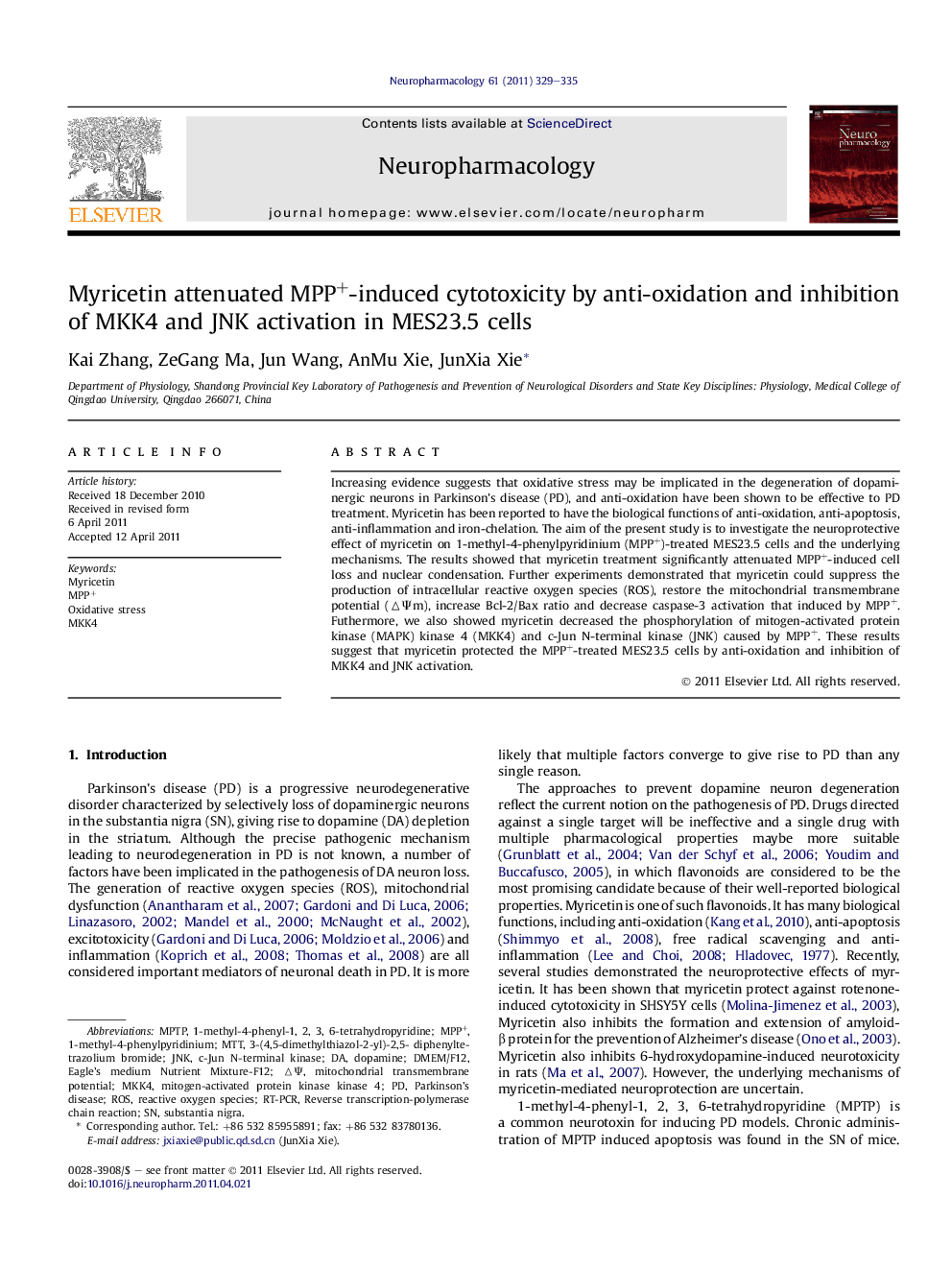| کد مقاله | کد نشریه | سال انتشار | مقاله انگلیسی | نسخه تمام متن |
|---|---|---|---|---|
| 2493661 | 1556652 | 2011 | 7 صفحه PDF | دانلود رایگان |

Increasing evidence suggests that oxidative stress may be implicated in the degeneration of dopaminergic neurons in Parkinson’s disease (PD), and anti-oxidation have been shown to be effective to PD treatment. Myricetin has been reported to have the biological functions of anti-oxidation, anti-apoptosis, anti-inflammation and iron-chelation. The aim of the present study is to investigate the neuroprotective effect of myricetin on 1-methyl-4-phenylpyridinium (MPP+)-treated MES23.5 cells and the underlying mechanisms. The results showed that myricetin treatment significantly attenuated MPP+-induced cell loss and nuclear condensation. Further experiments demonstrated that myricetin could suppress the production of intracellular reactive oxygen species (ROS), restore the mitochondrial transmembrane potential (▵Ψm), increase Bcl-2/Bax ratio and decrease caspase-3 activation that induced by MPP+. Futhermore, we also showed myricetin decreased the phosphorylation of mitogen-activated protein kinase (MAPK) kinase 4 (MKK4) and c-Jun N-terminal kinase (JNK) caused by MPP+. These results suggest that myricetin protected the MPP+-treated MES23.5 cells by anti-oxidation and inhibition of MKK4 and JNK activation.
The neuroprotective function of myricetin may be mediated by an inhibition of both oxidative stress and MKK4 activation.Figure optionsDownload as PowerPoint slideHighlights
► Myricetin protects MES23.5 cells from MPP+-induced cell death.
► Myricetin inhibits MPP+-induced oxidative stress and mitochondria dysfunction.
► Myricetin suppresses the MKK4 and JNK activity.
► Myricetin reverses the MPP+-induced Bcl/Bax system dysfunction.
Journal: Neuropharmacology - Volume 61, Issues 1–2, July–August 2011, Pages 329–335